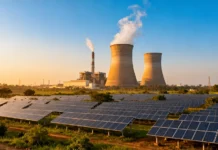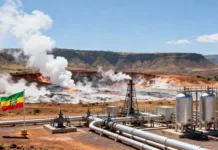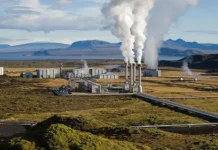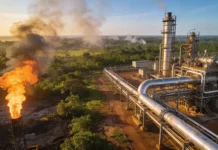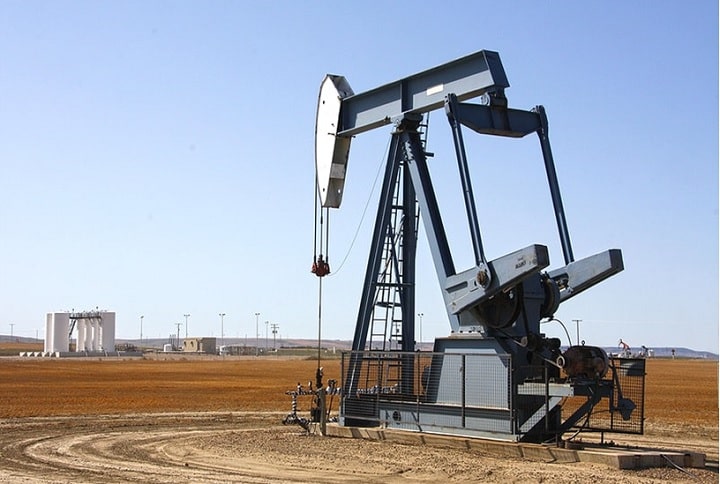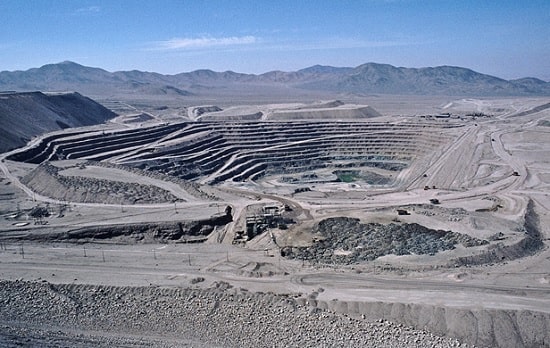In the energy sector, the value of mineral rights plays a crucial role in decision-making and investment strategies. Whether it’s oil, gas, or other minerals, determining the worth of these resources can significantly impact an energy company’s bottom line. Understanding how to assess the value of mineral rights is not just essential—it’s a sophisticated process involving multiple factors and advanced techniques.
What Are Mineral Rights, and Why Are They Important?
Mineral rights refer to the ownership of underground resources such as oil, natural gas, coal, and other valuable minerals. These rights can be separated from surface rights, allowing different parties to own the land’s surface and the minerals beneath it. Mineral rights are classified into several types, including fee simple ownership (where both surface and mineral rights are held by one owner) and leasehold interests, where a company leases the right to extract minerals from the owner.
In the energy industry, mineral rights are the foundation of resource extraction. Energy companies rely on these rights to access and exploit underground resources legally. The significance of mineral rights is highlighted by their potential profitability, making accurate valuation essential for companies looking to buy mineral rights and maximize their return on investment.
How Do Energy Companies Determine the Value of Mineral Rights?
The valuation of mineral rights is a complex process influenced by various factors, ranging from geographical location to market conditions. Understanding these factors is key to accurately assessing the value of mineral rights.
What Role Does Location Play in Valuing Mineral Rights?
Location is a primary factor in determining the value of mineral rights. The geographic location of the mineral deposit can significantly impact its value due to factors such as proximity to transportation infrastructure, markets, and existing extraction facilities. For instance, mineral rights located near pipelines, refineries, or railways are often more valuable because of the lower transportation costs and ease of access to markets. Additionally, the local geology and the presence of other mineral-rich deposits can enhance or diminish the value of the mineral rights.
How Does the Type of Mineral Impact Its Value?
The type of mineral associated with the rights is another critical factor in valuation. Different minerals have varying levels of demand and market prices, which can fluctuate based on global economic conditions. For example, oil and natural gas are generally more valuable than coal due to their broader applications and higher market demand. The value of specific minerals can also be affected by factors like extraction difficulty, environmental impact, and the availability of alternative resources. In essence, the more in-demand and scarce a mineral is, the higher its value.
What Is the Impact of Current and Future Market Conditions on Mineral Rights Value?
Market conditions, both current and anticipated, play a significant role in the valuation process. Energy companies must consider the volatility of commodity prices and long-term forecasts when assessing mineral rights. For instance, a sudden drop in oil prices can reduce the value of mineral rights related to oil extraction, while a forecasted increase in demand for natural gas could boost its value. Future price projections, trends in energy consumption, and geopolitical factors are all considered to predict how the value of mineral rights might change over time.
How Does Ownership Structure Influence Mineral Rights Value?
The ownership structure of mineral rights can greatly affect their value. Fee simple ownership, where the same entity owns both the surface and mineral rights, often commands a higher value due to the absence of conflicting interests. Conversely, leasehold interests, where a company leases the mineral rights, may have a lower value due to the limited time and conditions under which the minerals can be extracted. Split estates, where different parties own the surface and mineral rights, can complicate extraction efforts, thereby impacting the overall value. The potential for disputes and the need for negotiations between surface owners and mineral rights holders can further influence the valuation.
What Methods Do Energy Companies Use to Assess Mineral Rights Value?
Energy companies employ several methods to assess the value of mineral rights, each suited to different scenarios and types of resources.
How Is the Comparable Sales Method Used in Mineral Rights Valuation?
The comparable sales method involves evaluating the value of mineral rights by comparing them to similar transactions in the same region. This method is particularly useful in areas where there have been recent sales of mineral rights, providing a market-based valuation.
Pros:
- Reflects current market conditions.
- Relatively straightforward and easy to understand.
- Can be applied quickly with available data.
Cons:
- Relies on the availability of comparable sales data.
- May not account for unique characteristics of the property.
- Can be skewed by outlier transactions.
What Is the Income Approach in Mineral Rights Valuation?
The income approach assesses the value of mineral rights based on the projected income from resource extraction. This method involves estimating future production rates, commodity prices, and discounting future cash flows to present value.
Key Factors Considered:
- Expected production rates.
- Current and projected commodity prices.
- Operational costs.
- Discount rates.
- Time horizon of production.
How Is the Cost Approach Applied to Mineral Rights Valuation?
The cost approach values mineral rights based on the cost of acquiring equivalent mineral rights or the cost of developing the resource. This method is often used when comparable sales data is unavailable or when the mineral rights are undeveloped.
When Most Appropriate:
- In regions with little market activity.
- For undeveloped or speculative mineral rights.
When Least Appropriate:
- For well-developed mineral rights with established production.
- In active markets with abundant comparable sales data.
What Are the Key Factors in Estimating Future Production Potential?
Estimating the future production potential of mineral rights is a vital part of their valuation, directly influencing their worth.
How Do Geology and Reserve Estimates Affect Value?
Geological surveys and reserve estimates are critical in determining the amount of recoverable resources and, consequently, the value of the mineral rights. These estimates are typically derived from various methods, including:
- Seismic surveys, which provide detailed images of the subsurface.
- Core sampling, where rock samples are extracted and analyzed.
- Well logging, which records geological formations encountered while drilling.
What Is the Role of Extraction Technology in Valuing Mineral Rights?
Advancements in extraction technology can significantly impact the value of mineral rights by increasing the efficiency and reducing the cost of resource extraction.
Main Technologies Considered:
- Hydraulic fracturing (fracking) for accessing oil and gas in shale formations.
- Enhanced oil recovery (EOR) techniques for maximizing extraction from mature fields.
- Automated drilling rigs that reduce operational costs.
How Do Legal and Regulatory Factors Impact Mineral Rights Value?

Legal and regulatory considerations are integral to mineral rights valuation, influencing both the ability to extract resources and the costs associated with it.
What Are the Key Legal Documents Involved in Mineral Rights Valuation?
Key legal documents play a crucial role in mineral rights valuation:
- Deeds, which confirm ownership and the transfer of rights.
- Leases, detailing the terms under which minerals can be extracted.
- Royalty agreements, specifying the payments to be made to the rights holder.
Title verification is essential to ensure that the mineral rights are free of legal disputes or encumbrances, which could diminish their value.
How Do Environmental Regulations Affect Mineral Rights Value?
Environmental regulations can have a substantial impact on the value of mineral rights by restricting or complicating extraction activities. Key regulations that energy companies must consider include:
- Clean Air Act, which regulates emissions from extraction activities.
- Clean Water Act, focusing on the protection of water resources.
- Endangered Species Act, which may limit operations in areas inhabited by protected species.
These regulations can increase operational costs or limit the amount of extractable resources, thereby affecting the overall value.
What Are the Risks and Uncertainties in Mineral Rights Valuation?
Valuing mineral rights is fraught with risks and uncertainties, which companies must carefully navigate.
How Do Market Fluctuations Introduce Risk?
Fluctuations in commodity prices introduce significant risk in mineral rights valuation. For example, a sudden drop in oil prices can render previously valuable rights less profitable. Energy companies often mitigate these risks through strategies such as hedging, which locks in prices for future production, reducing exposure to market volatility.
What Are the Environmental and Operational Risks?
Environmental and operational risks can also impact the value of mineral rights. Common environmental risks include:
- Contamination of water sources.
- Air pollution and emissions.
- Land reclamation costs after extraction.
Operational challenges, such as the difficulty of extraction or the availability of skilled labor, can further influence the valuation.
How Do Energy Companies Use Technology to Assess Mineral Rights Value?
Technology plays an increasingly important role in the valuation of mineral rights, enhancing accuracy and efficiency.
What Software and Tools Are Used in Mineral Rights Valuation?
Energy companies use specialized software and tools to streamline the valuation process, such as:
- Valuation models that integrate geological, financial, and market data.
- Geographic Information Systems (GIS) for mapping and analyzing mineral deposits.
- Reserve estimation software that predicts recoverable resources.
These tools offer significant advantages, including improved accuracy, faster analysis, and the ability to handle large datasets.
How Do Data Analytics and AI Impact Valuation?
Data analytics and AI are transforming mineral rights valuation by improving predictive models and identifying trends. Key applications include:
- Predictive analytics to forecast market trends and demand.
- Machine learning algorithms that enhance reserve estimation accuracy.
- AI-driven decision support systems that optimize valuation strategies.
What Are the Steps in the Mineral Rights Valuation Process?
Valuing mineral rights involves a structured, step-by-step process that energy companies follow to ensure accurate assessments.
How Do Companies Conduct Initial Research and Data Collection?
The initial phase involves gathering all relevant information about the mineral rights. Key steps include:
- Reviewing public records for ownership and historical data.
- Conducting geological surveys to assess the resource potential.
- Analyzing market reports for current and projected commodity prices.
What Is the Process of Analyzing and Interpreting Data?
Once data is collected, it must be analyzed to inform the valuation. Techniques used in data interpretation include:
- Statistical analysis of market data to identify trends.
- Geospatial analysis to assess the impact of location on value.
- Financial modeling to predict future cash flows and profitability.
How Do Companies Finalize and Report Mineral Rights Valuation?
The final stage involves compiling the valuation findings into a comprehensive report, which is then shared with stakeholders. Common report contents include:
- Summary of the valuation methods used.
- Detailed financial projections.
- Analysis of risks and uncertainties.
- Recommendations for action based on the valuation.
What Are the Advantages and Disadvantages of Owning Mineral Rights?
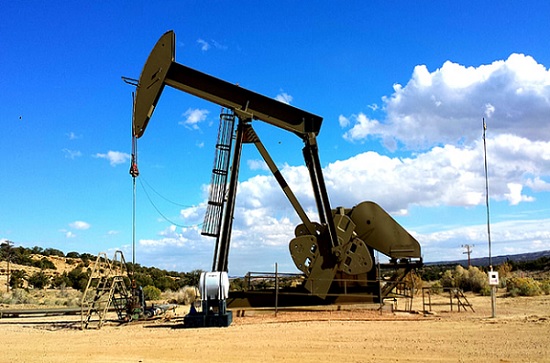
Owning mineral rights comes with both benefits and drawbacks, which potential buyers should carefully consider.
Advantages of Owning Mineral Rights
Benefits include:
- Potential income from leasing or selling the rights.
- Asset appreciation over time as demand for resources increases.
- Control over resource development, including the ability to negotiate favorable terms.
Disadvantages of Owning Mineral Rights
Downsides include:
- Legal complexities, particularly in cases of split estates.
- Environmental liabilities, including cleanup and reclamation costs.
- Market risks, such as fluctuating commodity prices that can affect profitability.
How Do Energy Companies Negotiate Mineral Rights Transactions?
Negotiating mineral rights transactions requires a strategic approach to ensure fair value and favorable terms.
What Are the Key Considerations in Negotiating Mineral Rights Leases?
When negotiating leases, energy companies focus on several key factors, including:
- Royalty rates, which determine the percentage of revenue paid to the rights holder.
- Lease duration, which affects how long the company can extract resources.
- Bonus payments, which are upfront payments made to secure the lease.
Common lease terms and their implications:
- “Primary term” specifies the initial lease period before production begins.
- “Shut-in clause” allows the company to maintain the lease without production under certain conditions.
- “Pugh clause” limits the lease to only the producing areas of the property.
How Do Companies Ensure Fair Value in Mineral Rights Purchases?
Ensuring fair value during mineral rights purchases involves a careful assessment of the property’s worth and strategic negotiation. Companies use various strategies, such as:
- Conducting thorough due diligence to understand the value and risks.
- Comparing similar transactions to establish a fair market value.
- Negotiating purchase terms that protect against future price drops or operational challenges.
What Are the Trends and Future Developments in Mineral Rights Valuation?
The valuation of mineral rights is evolving, with new trends and developments shaping the industry’s future.
How Is the Rise of Renewable Energy Impacting Mineral Rights Valuation?
The growing shift towards renewable energy is beginning to affect the valuation of traditional mineral rights. As demand for fossil fuels potentially declines, energy companies may see changes in how they approach valuation, including:
- Decreased interest in coal and oil rights.
- Increased focus on minerals used in renewable technologies, like lithium and cobalt.
- Adjustments in long-term projections for fossil fuel consumption.
What Is the Future of Technology in Mineral Rights Valuation?
Looking ahead, advancements in technology will continue to impact how mineral rights are valued. Emerging technologies to watch include:
- AI for more accurate predictive modeling.
- Blockchain for secure, transparent transactions.
- Real-time data analysis for up-to-the-minute market insights.
Conclusion
Valuing mineral rights is a multifaceted process that requires careful consideration of numerous factors, from geological conditions to market dynamics and legal frameworks. For energy companies, a thorough and accurate valuation is essential not only for making informed decisions but also for maximizing the profitability and sustainability of their operations. As the industry evolves, so too will the methods and tools used in mineral rights valuation, ensuring that energy companies remain at the forefront of resource management.




























